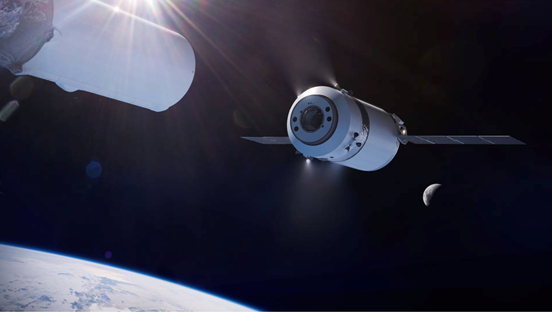Terrestrial supply chains are pretty well evolved. They’ve been the focus for decades now to improve efficiency, lower cost and minimize disruptions. As advanced as these systems now are, transitioning them to deep space requirements represents a critical gap that must rapidly be filled.
It was one level of complexity when supplying MIR, Skylab (albeit briefly) and the ISS. Sustainable space exploration and eventually colonization is near impossible without a nimble and complex space supply chain. A major goal for NASA is comprehensive space-logistics systems that will soon be called on to support the Artemis launch, and Gateway space station, all the way to the landing astronauts again on the moon.
Supply Chain Requirements in a Normal World vs. Space
Typically, discussions regarding supply chains revolve around sourcing, order processing, inventory, warehouse and transportation management, analytics, vendor monitoring and management, and the normal day-to-day planning and monitoring of it all from a high level.
When dealing with space-based supply chains, it’s all about delivering supplies approximately 250,000 miles (to the moon), with no possibility to overnight anything.
This distance compares with low-orbit space stations, which is similar to the distance from Houston to Dallas (242 miles). For example:
- Mir 223 miles
- Skylab 270 miles
- ISS 254 miles
Granted, for these stations there were a myriad of challenges and issues. However, if looking at distance being a major factor, 270 miles or the deep space of 250,000 miles—it’s easy to see the added complexity.
Achieving Integrated Space-Logistics
MIT has long been involved with NASA regarding space-logistics, and established four steps to achieving an integrated space-logistics capability, including:
- Terrestrial supply-chain analogies that rely heavily on the NASA Haughton-Mars-Project (HMP), which is the functional equivalent of a Mars Exploration base in the high Arctic (75N 90W). This provides initial class-of-supply and logistics information for modeling purposes.
- Space Logistics network analysis, an integrated network model of space logistics, where the nodes are Earth-Moon-Mars-orbits, Lagrangian points and expected landing-exploration sites.
- Exploration demand/supply modeling based on uncertainties that include cyclical demand variations, changes in the cargo-mix, transportation costs, unplanned supply-line interruptions, storage and lifetime issues (degradation, obsolescence, cryo-boiloff) and consumption rates and are used to populate the supply-chain network model.
- Interplanetary Supply-Chain Architecture—Trade Studies—the combination of network and supply/demand models with existing space logistics models from the Space Shuttle and the International Space Station to answer critical questions.
Winning Contracts
To deal with its deep space plans, in the summer of 2018 NASA issued a request for proposals (RFP) for its Gateway Logistics Services program for the transport of pressurized and unpressurized cargo and the disposal of cargo from Gateway. Stated in the RFP, each mission is required to deliver no less than 3,400 kilograms of pressurized cargo and 1,000 kilograms of unpressurized cargo to the Gateway. The RFP indicates that a single logistics mission support two crewed visits to the Gateway of up to 90 days each. NASA projects actually performing one crewed mission annually for the next several years.
Although there are many stipulations in the RFP, another important one is that the winning spacecraft must arrive at Gateway within 30 days after launch. The cost? NASA will pay a firm fixed-price contract for logistics services, with a maximum value of $7 billion over 15 years.
In 2020, NASA awarded the first logistics contract to SpaceX and recently, NASA selected SpaceX to continue development of the first commercial human lander that will safely carry two American astronauts to the moon’s surface.
SpaceX will use the Dragon XL capsule as a cargo module on the Falcon rocket. The module container will carry approximately 3.5 metric tons inside and another metric ton stored outside. Plans are underway to ensure the cargo vehicle can interface with Gateway. The cargo module is anticipated to launch a week before the crew and will be in space for 30-60 days, which will lengthen in the future.
The Outpost
Another node will be involved called a HALO, or Habitation and Logistics Outpost, to serve as a gateway for tools and supplies for the space station and for transport to the moon. NASA has finalized the contract for the initial crew module of the agency’s Gateway lunar orbiting outpost.
Orbital Science Corporation of Dulles, Virginia, a subsidiary of Northrop Grumman Space, was awarded the $187 million contract to design the habitation and logistics outpost (HALO) for the Gateway. The Gateway is a docking hub with three ports, including a storage area for logistics supply and a lander.
The requirements and efforts are mind-boggling when compared with all previous space programs. The combination, however, of NASA’s long experience and the best technology from private industry, will no doubt continue to provide wonder and excitement in this next phase of U.S. space history.

